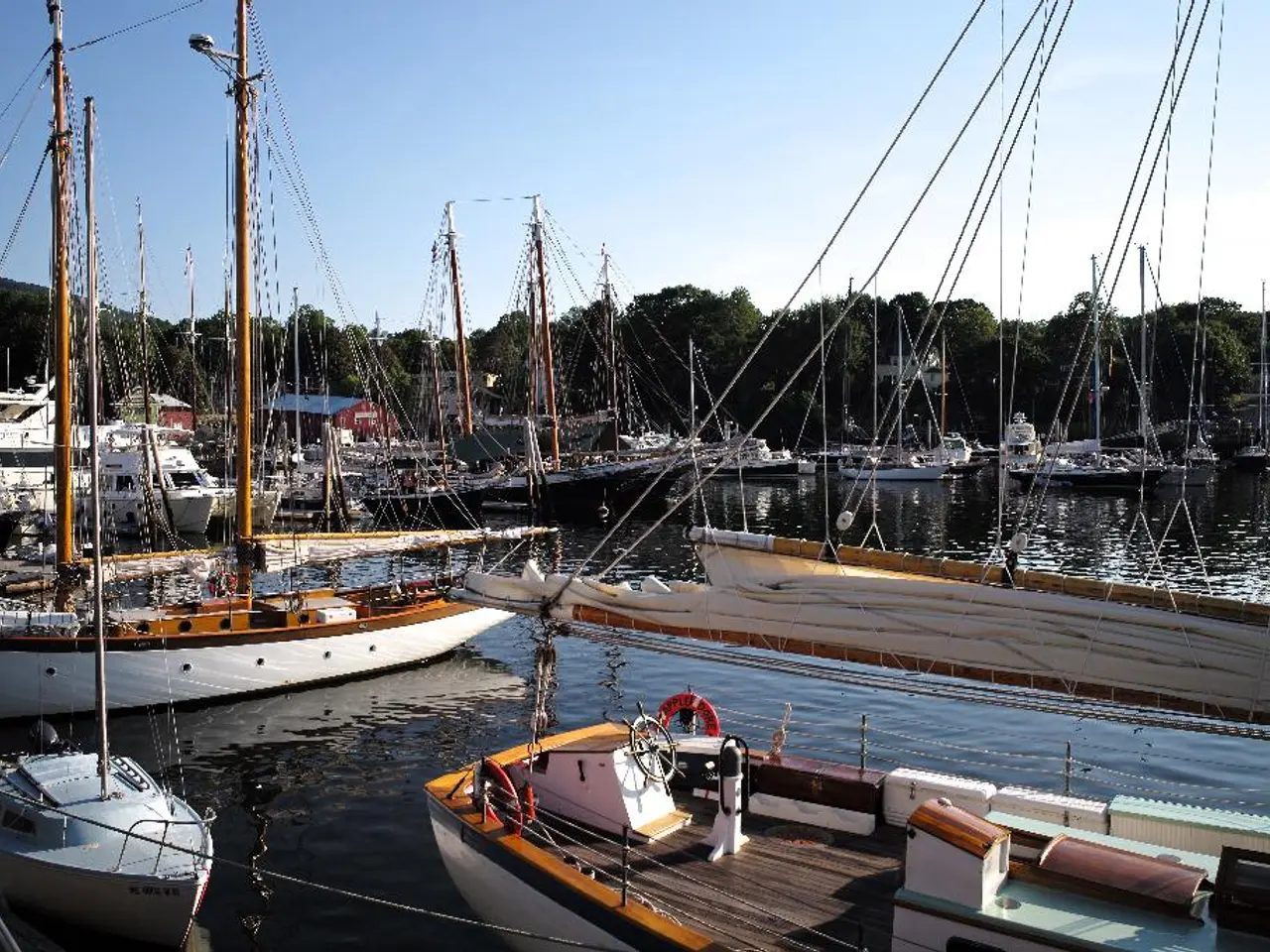Living in a Watery World: Thirty Years Later - Kevin Costner's Water-Soaked 'Mad Max' outshines Memory
In the summer of 1995, the movie Waterworld hit theatres, marking a significant milestone in filmmaking history. With an unprecedented budget of around $175 million, it was the most expensive film ever produced at the time[1][2]. The production was fraught with challenges, from sinking sets and adverse sea conditions to creative disputes and health and safety incidents.
The movie, set in a post-apocalyptic ocean world, was meticulously rigged with a bespoke trimaran for its lead actor, Kevin Costner[1]. Costner, who was still popular following the success of "Robin Hood: Prince of Thieves", "The Bodyguard", and "Field of Dreams", headlined the film[1]. Kevin Reynolds was initially the director, but he left the project due to creative differences, especially with Costner, who had substantial control over the production[2][3]. Joss Whedon was brought in for script rewrites, aligning the story more closely with Costner’s vision[2][3].
The production built large artificial floating sets, but these sets frequently sank, causing costly delays and reshoots[1][2]. Shooting in a large seawater enclosure was further complicated by inclement weather and unpredictable currents, stretching the timeline and budget[2]. A near-death experience occurred when Costner got stuck on a sinking boat mast[2].
The Atoll, a floating settlement serving as the movie's primary setting, was populated by the last representatives of humanity, living in a lawless society where trusting the wrong person could get you killed[1]. The Smokers, a group of seedy antagonists operating out of a rusted-up version of the Exxon Valdez tanker, were led by Dennis Hopper's character, Deacon[1].
Despite the swelling budget and the chaotic production, Waterworld eventually made a profit due to a significantly better return overseas and decent performance on VHS[2][3]. The movie was primarily shot in Hawaii, and it faced negative buzz even before release, with media describing the set as "chaotic," "difficult," and "out of control," earning it nicknames like "Fishtar" and "Kevin’s Gate," sly nods to infamous flops "Ishtar" and "Heaven's Gate"[1][4].
Yet, Waterworld grossed about $264 million worldwide, demonstrating that even with its financial struggles, it managed to captivate audiences[2][3]. Today, the movie is available to rent and buy on popular streaming platforms such as Apple TV and Prime Video in the US and UK.
References:
[1] Schneider, M. (1995, April 24). Waterworld Sinks $175 Million into the Deep. Retrieved from https://www.variety.com/1995/film/news/waterworld-sinks-175-million-into-the-deep-1200532596/
[2] Vogel, J. (2019, June 18). The True Story Behind the Making of Waterworld. Retrieved from https://www.indiewire.com/2019/06/waterworld-true-story-behind-making-kevin-costner-1202185119/
[3] Cieply, M. (2014, July 17). Waterworld, 20 Years Later, Is a Profitable Flop. Retrieved from https://www.nytimes.com/2014/07/18/movies/waterworld-20-years-later-is-a-profitable-flop.html
[4] Ebert, R. (1995, July 21). Waterworld (1995). Retrieved from https://www.rogerebert.com/reviews/waterworld-1995
- The movie Waterworld, set in a post-apocalyptic ocean world, became notorious for its extensive budget and chaotic production, earning it nicknames like "Fishtar" and "Kevin’s Gate".
- Despite the turbulent production and sinking sets in Waterworld, the movie managed to captivate audiences worldwide, grossing about $264 million.
- The film Waterworld, available for rent and purchase on streaming platforms like Apple TV and Prime Video, features "entertainment" from genres like science fiction and fantasy and is part of the "movies-and-tv" category.
- Although the media depicted the sets of Waterworld as "chaotic" and "difficult," the film's box office success demonstrates that history may show it as a significant milestone in entertainment history, alongside movies like Ishtar and Heaven's Gate.








